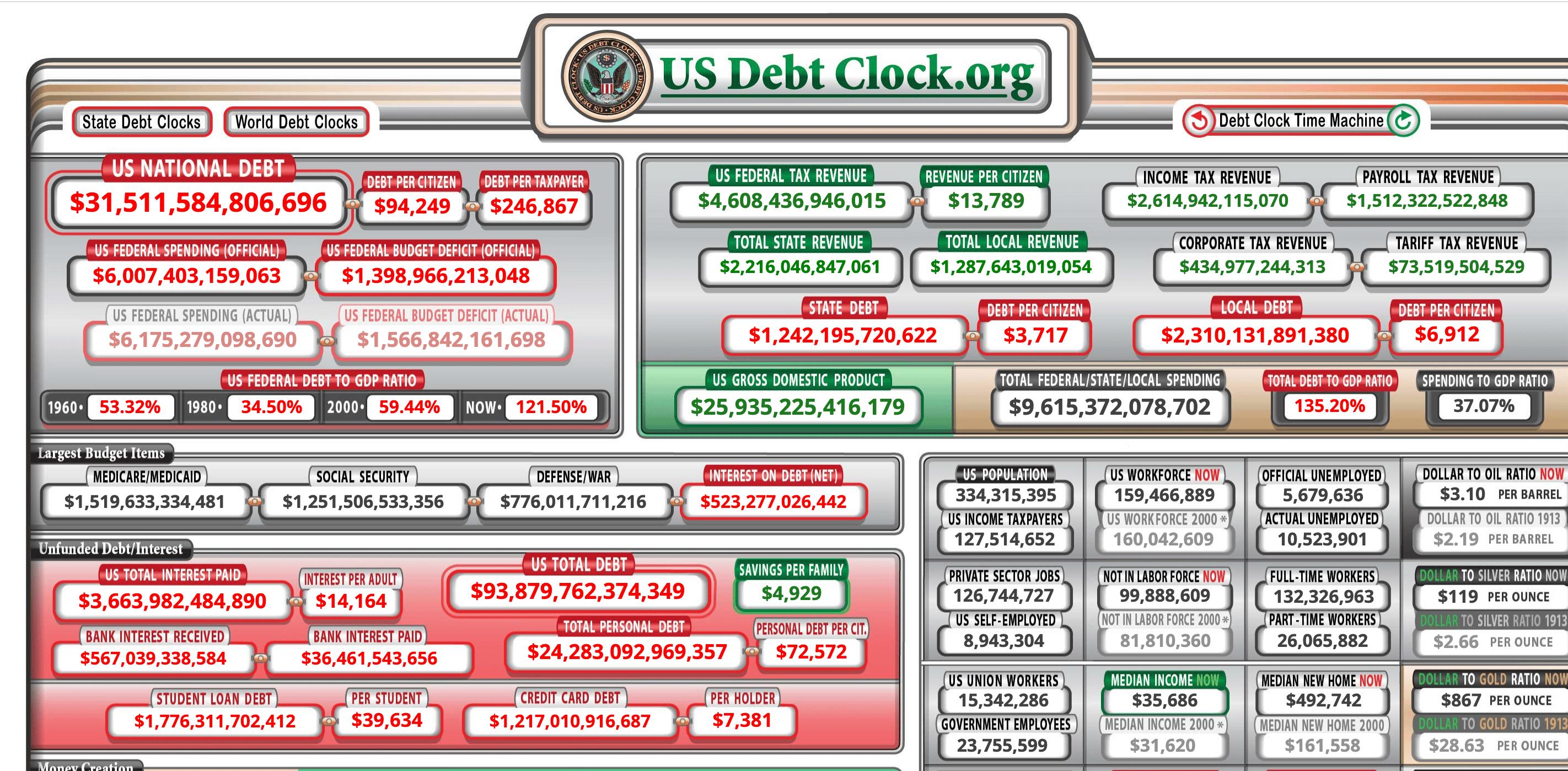This week the U.S. government reached its 31.4 trillion dollars borrowing limit, better known as the “debt ceiling.” This led to a showdown among House Republicans, President Biden, and congressional Democrats.
House Republicans are demanding that President Biden and Senate Democrats agree to include spending cuts with the debt ceiling increase. However, President Biden and the congressional Democrats are refusing to negotiate with Republicans. Rather, they and their allies in the mainstream media are lambasting Republicans for their “irresponsibility” in seeking to include spending cuts with an increase in the debt ceiling.
America’s national debt is approximately 122 percent of the gross domestic product (GDP), meaning the government owes more than the population produces. Interest payments on the national debt follow in size behind other federal budget big spending areas of Social Security, Medicare, and “defense.” While interest payments are made, the national debt continues to grow each year.
Government spending steals resources from the private sector. Thus, there is less capital available for private businesses to grow and create new jobs. Government spending also contributes to price inflation and the declining value of the dollar as the Federal Reserve monetizes the debt. One reason the Fed cannot allow interest rates to rise anywhere near where they would be in a free market is that it would cause the federal government’s interest payments to rise to unsustainable levels. Considering these facts, it should be clear that the irresponsible ones are those who think the government should increase its credit limit without cutting spending.
This is not to say that establishment Republicans like House Speaker Kevin McCarthy are heroes of fiscal restraint. Rather, McCarthy, like most Republicans, objected neither to increased spending nor to debt ceiling suspensions when Donald Trump was president. Further, any Republican spending plan will likely continue increasing spending on the military-industrial complex while refusing to address the looming cost problems with Social Security and Medicare.
While some Republicans are willing to discuss reforms to Social Security and Medicare, most are still too afraid of the “senior lobby” to support any changes in the programs—even if such changes will not harm current beneficiaries. Consequently, it is unlikely Congress will pass meaningful entitlement reform—at least until it is forced to do so because the Medicare and Social Security Trust Funds run out of money. Insolvency is projected for the Medicare Trust Fund in five years and for the Social Security Trust Fund in 12 years. Of course, Congress may be able to avoid making tough choices since the Federal Reserve will likely cut government benefits, along with workers’ wages and the value of savings, via the inflation tax.
Following early reports that the House Republican leadership was open to supporting cuts in military spending, there arose a predictable cry from Republican hawks that any reduction in spending would leave the U.S. and its allies vulnerable to our enemies. The limited cuts considered, though, would still keep America with a military budget exceeding the combined military budgets of the next nine biggest spending countries. After some pressure from the military-industrial complex’s loyalists and propagandists, most Republicans retreated from supporting defense cuts.
A problem with many fiscal conservatives is they accept the premise of the welfare-warfare statists. Thus, they are unable to make consistent principled arguments supporting spending cuts and opposing spending increases. The key to restoring a free society is for a critical mass of individuals to reject statism.
This article was originally featured at the Ron Paul Institute for Peace and Prosperity and is republished with permission.







